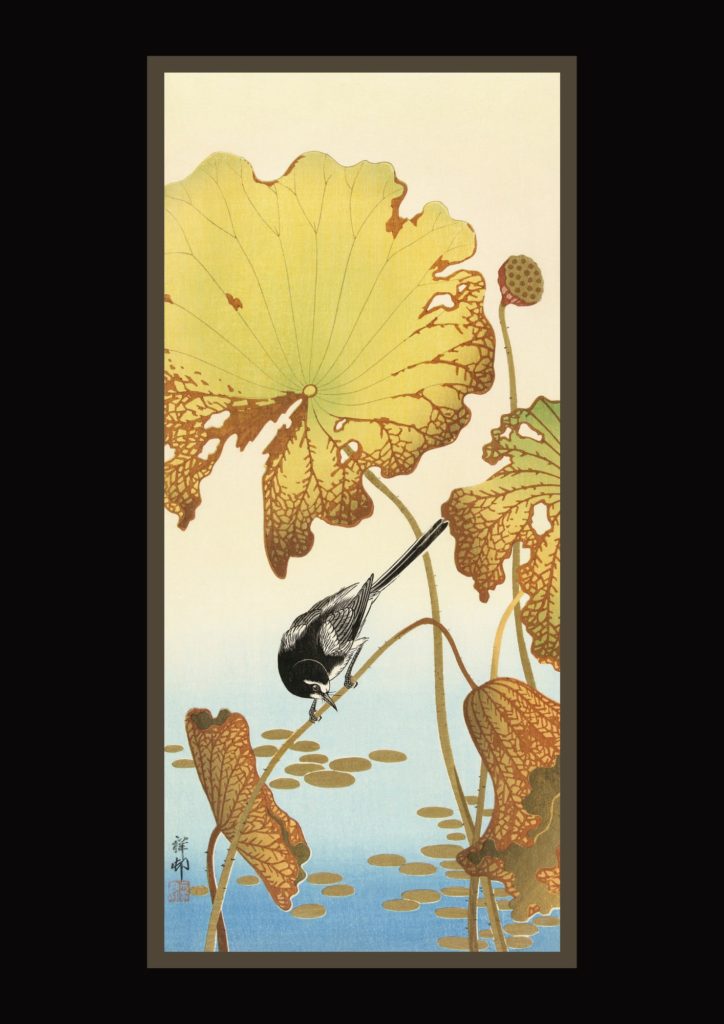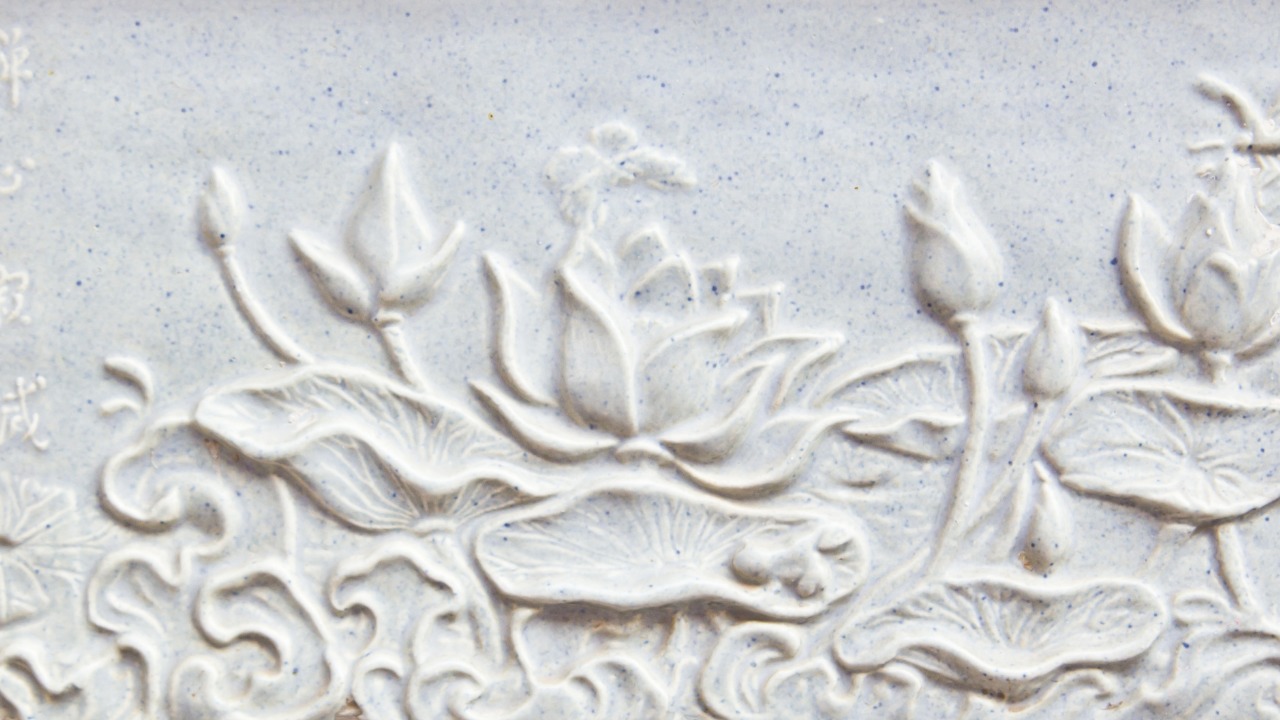Padma & Kamala, the lotus
A yoga pose, some variations, a mudra and the lotus in art
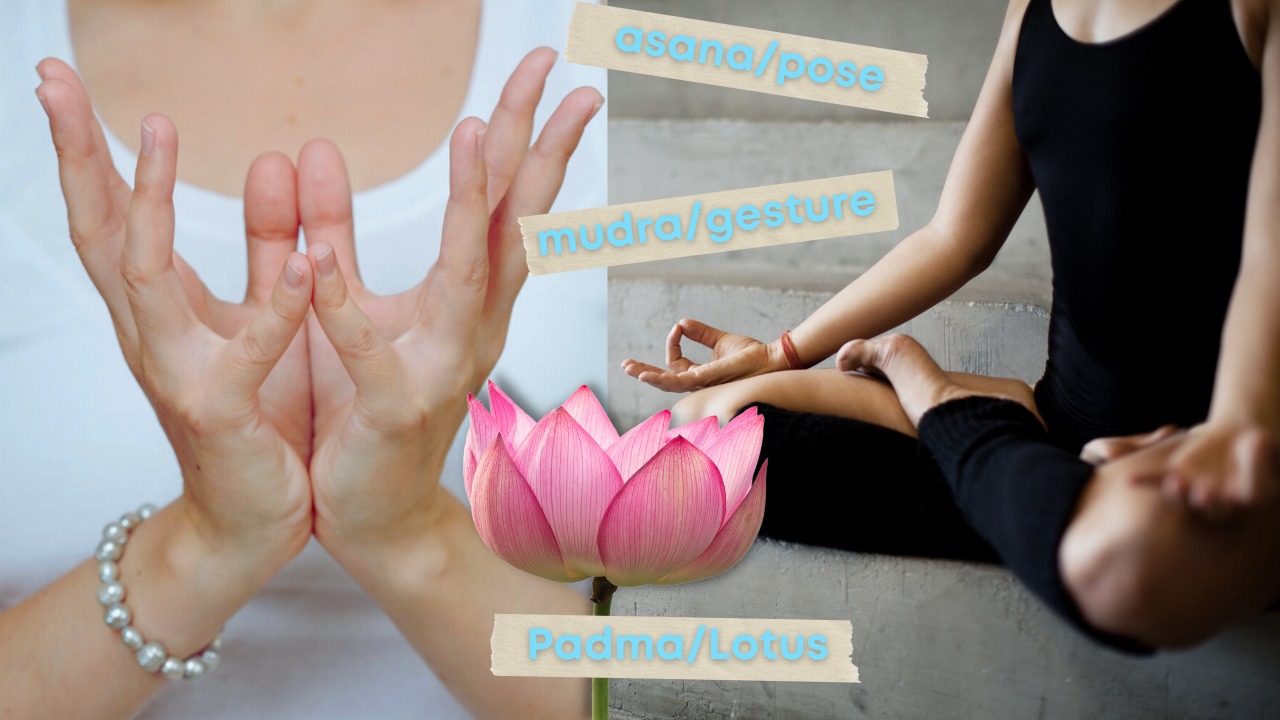
Padmasana or Lotus Pose in Yoga
[intermediate to advanced]
How to practice Padmasana
Chin mudra
Jnana mudra
Bhairava mudra

Yoni mudra
How to practice Baddha Padmasana
Chakras
Health benefits and anatomy
Alternatives to Full Lotus

Ardha Padmasana or Half Lotus [beginner]
How to practice Ardha Padmasana or Half Lotus
Chakras
Health benefits
Easy Pose or Sukhasana
Fire Log Pose or Agnistambhasana
Benefits and cautions
The Lotus Mudra/Padma mudra
Open your heart with The Lotus Mudra
How to practice the Padma Mudra or Lotus mudra
The Lotus in ART

Guanyin as the Nine-Lotus Bodhisattva 1593, unknown artist. In the summer of 1586, nine lotus flowers in the Ming imperial palace issued double blooms, a rare occurrence that was seen as an auspicious omen. That the flowers bloomed in the residence of the Empress Dowager Cisheng, mother of the emperor, was particularly favorable, for Cisheng was a devout Buddhist who had dreamed of her own incarnation as Guanyin. This painting is one of several Cisheng commissioned to celebrate the occasion. The composition, which places the boy pilgrim Shancai (Sudhana, in Sanskrit) before a maternal bodhisattva in a palace setting, strongly suggests that we are meant to see Cisheng as Guanyin. The square red seals in the upper left belong to Cisheng and her son, Emperor Wanli. Guanyin as the Nine-Lotus Bodhisattva, Unidentified artist , late 16th century, Hanging scroll; ink and color on silk, China
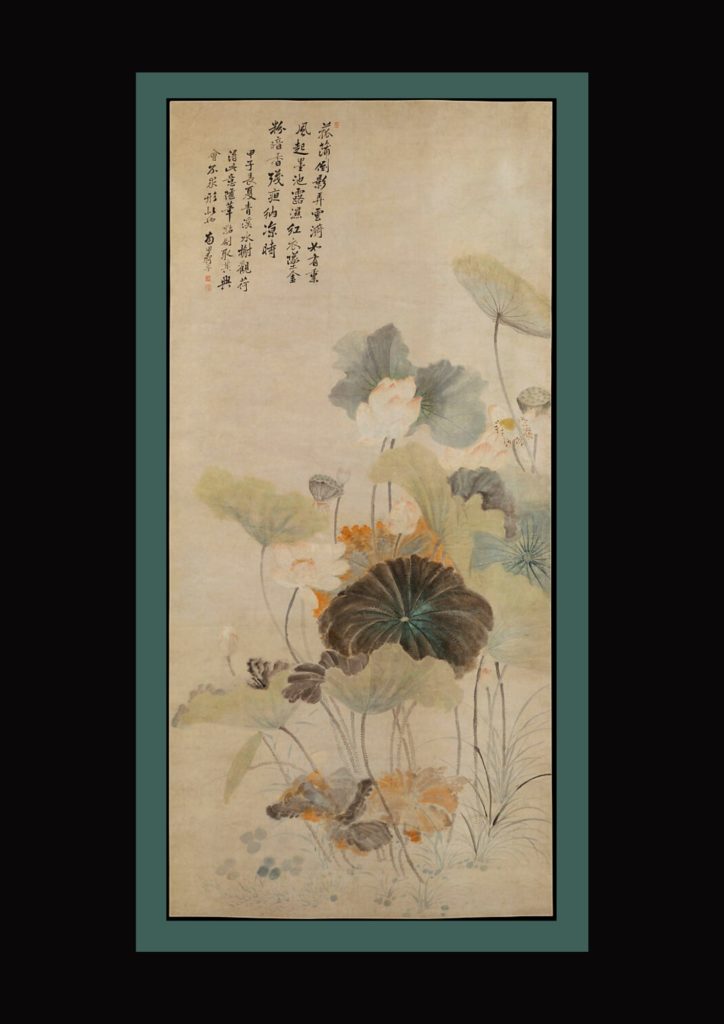
Lotuses on a Summer Evening, dated 1684 Attributed to Yun Shouping Chinese Lotuses, a tour de force of "boneless" (color washes with no ink outlines) painting on paper, shows Yun as the most brilliant and subtle colorist of his time. Although the depiction recalls the realism of Song Painting Academy flower paintings, the artist insists in his colophon that he "merely followed the inclination of [his] brushwork in making dots and washes, benefiting from exhilarating accidents and not searching for physical verisimilitude."
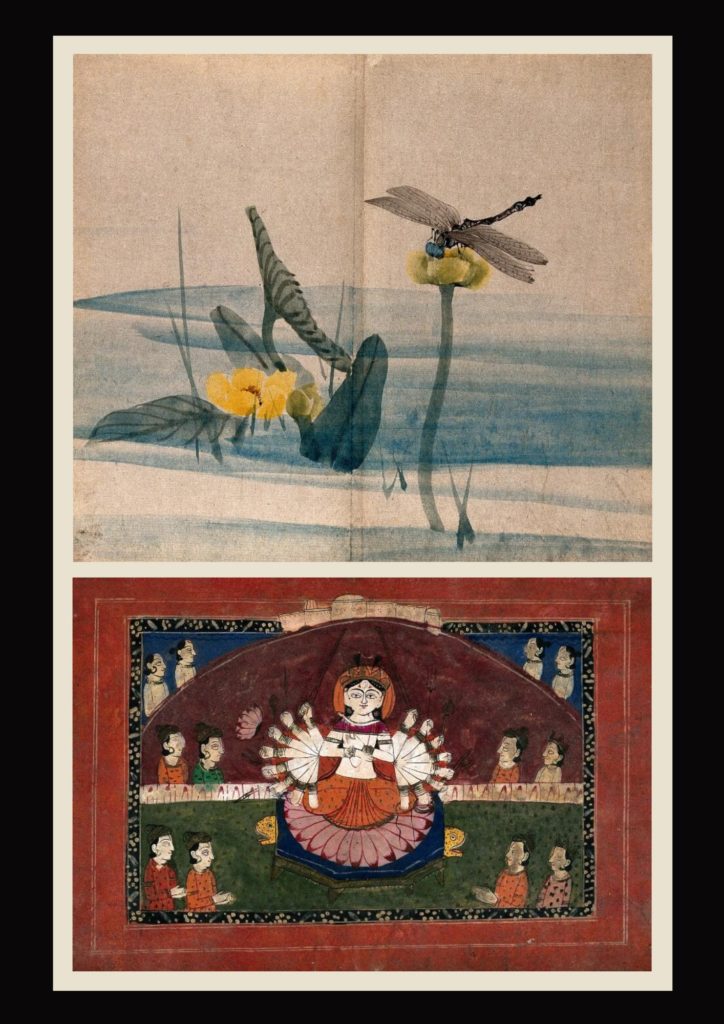
Top portion: A dragonfly on a lotus flower (Nelumbo species) held above the water. Watercolour from the Wellcome Collection. Bottom portion: from the Wellcome Collection, Durga on a lotus with all her weapons surrounded by devotees. Gouache drawing.
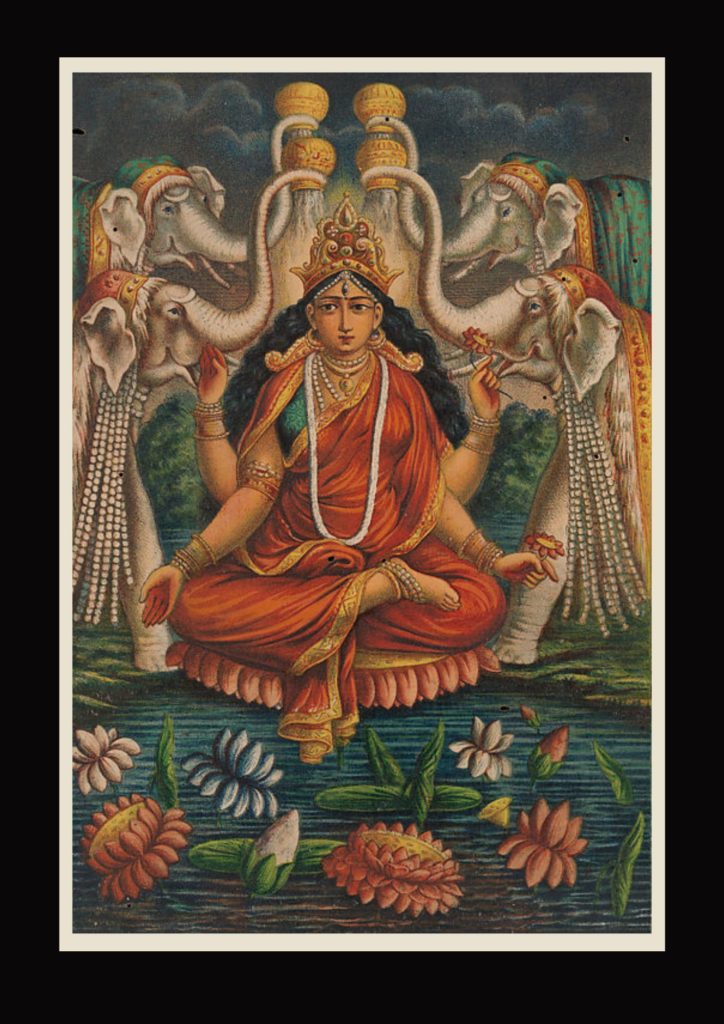
Four elephants lustrate the goddess who is identified in a below label as Kamala. She holds lotuses in her two left hands while her upper right is in the abhaya mudra (reassurance) and her lower right is in the varada mudra (boon giving). She sits on a lotus and in fact, her name means “she of the lotus”, an epithet of the goddess Lakshmi. Kamala is a bringer of prosperity, fertility and luck, all characteristics she shares with Lakshmi, a goddess that is also lustrated by elephants. India. 1885–90. From the Metropolitan Museum of Art
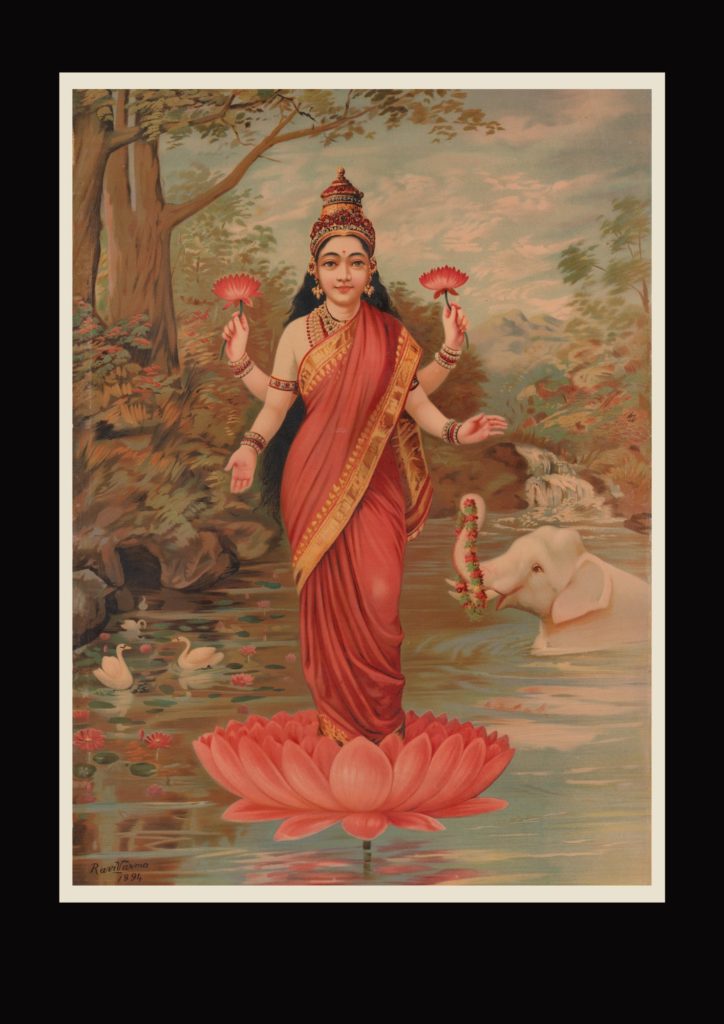
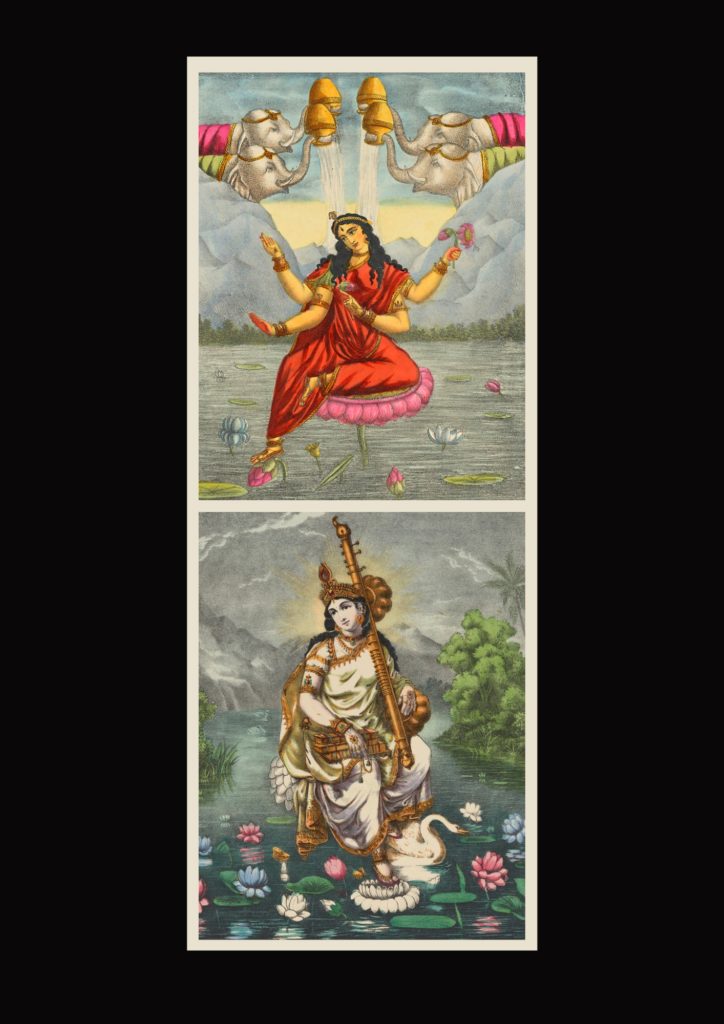
Top portion: Goddess Kamalatmika, ca. 1880–85, Designed and published by The Hindu Art Studio The beautiful and benign goddess Kamalamika, the “[red] lotus lady,” is a tantric form of Lakshmi, Hinduism’s embodiment of all that is auspicious and abundant. As the goddess of wealth and prosperity, Lakshmi is most often depicted being lustrated by heavenly elephants where she is known as Gaja-Lakshmi. In her esoteric aspect as Kamalamika, she is enthroned on a red-lotus pedestal that rises from the silvered waters of a mountain lake, evoking her divine nature. Another flower bud serves as her footrest. In her four arms she displays lotus buds and a bloom and extends auspicious gestures to her devotees. In the heavenly skies above four white elephants hold golden pitchers (lota) in their extended trunks, allowing the waters to cascade upon the head of the goddess, empowering her with the life affirming waters that ensure abundance in all things. Ice-grey mountains rise majestically behind her, framing her in the glowing white of the Himalayan peaks beyond. Lower portion: Goddess Sarasvati, 1878–1883, West Bengal, Calcutta The goddess of learning, music and the arts is readily identified by the golden vina she rests on her shoulder and the bundle of palm-leaf books with their wooden covers and colored binding cords that she holds on her knee. As described in the iconographic sources, she has a white complexion and wears a gold-trimmed white sari, sits upon a white lotus that rises from a lotus pond. She rests one foot on her celestial vehicle, the white swan, the other on a white lotus foot-rest. The landscape setting combines lush forest with a palm tree and icy mountain ranges beyond, the latter alluding to Shiva’s abode.
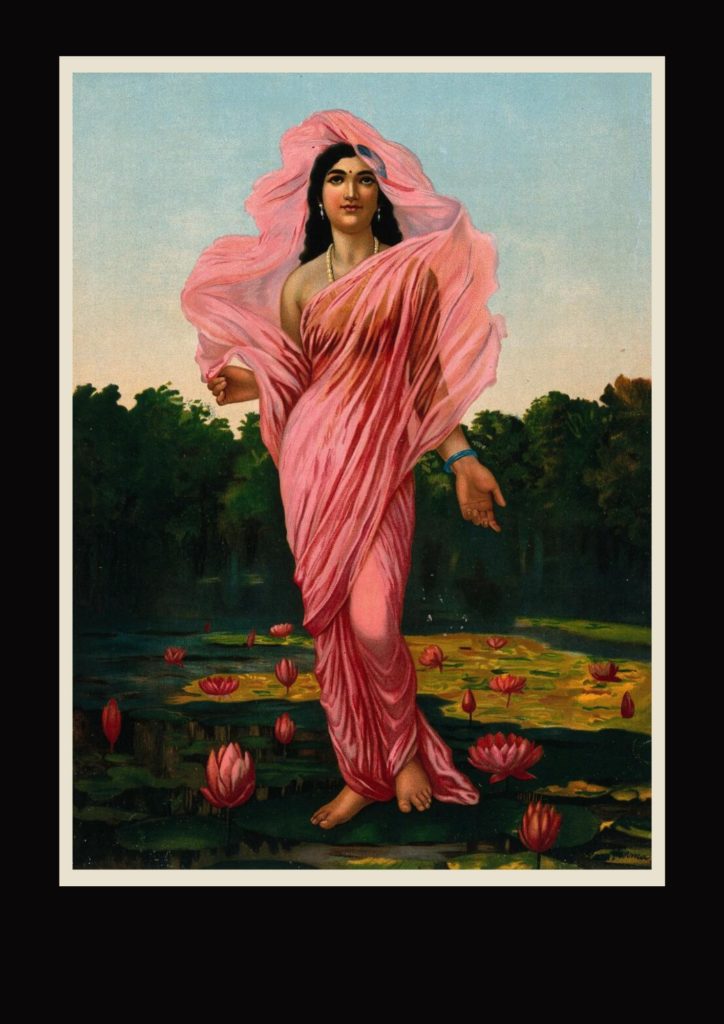
Padmini, the Lotus lady: Chromolithograph by Ravi Varma, 1848-1906.
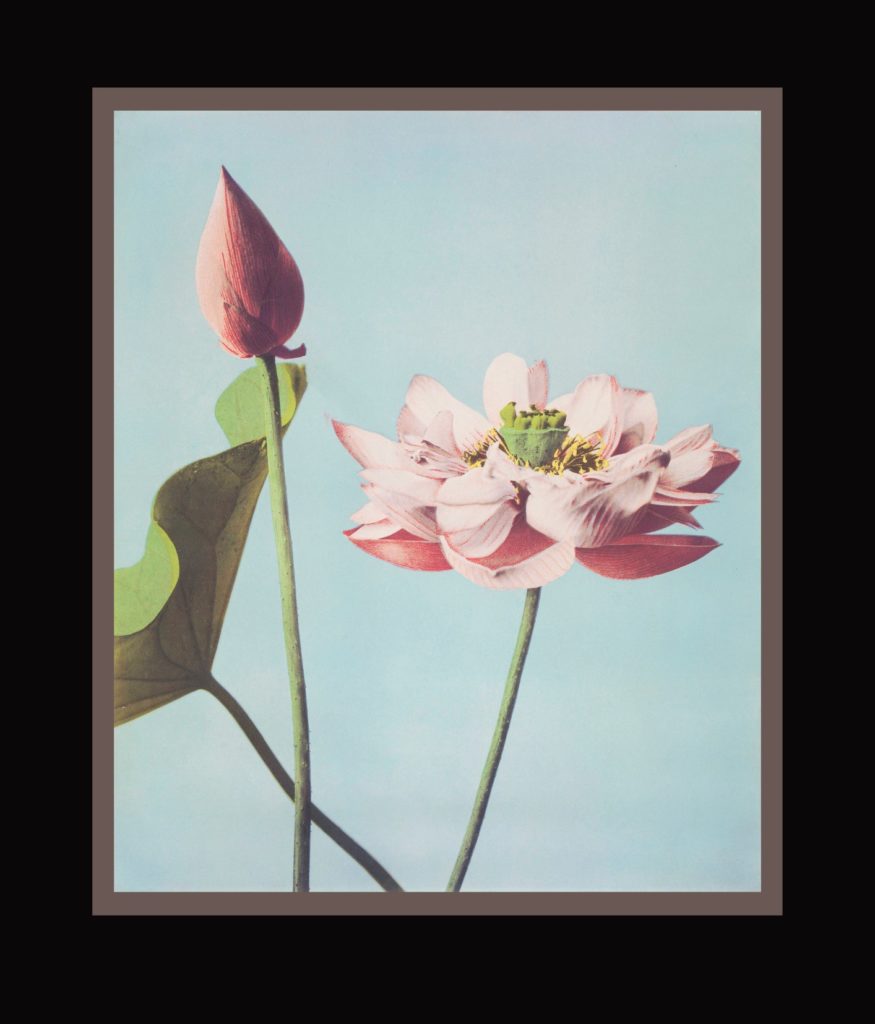
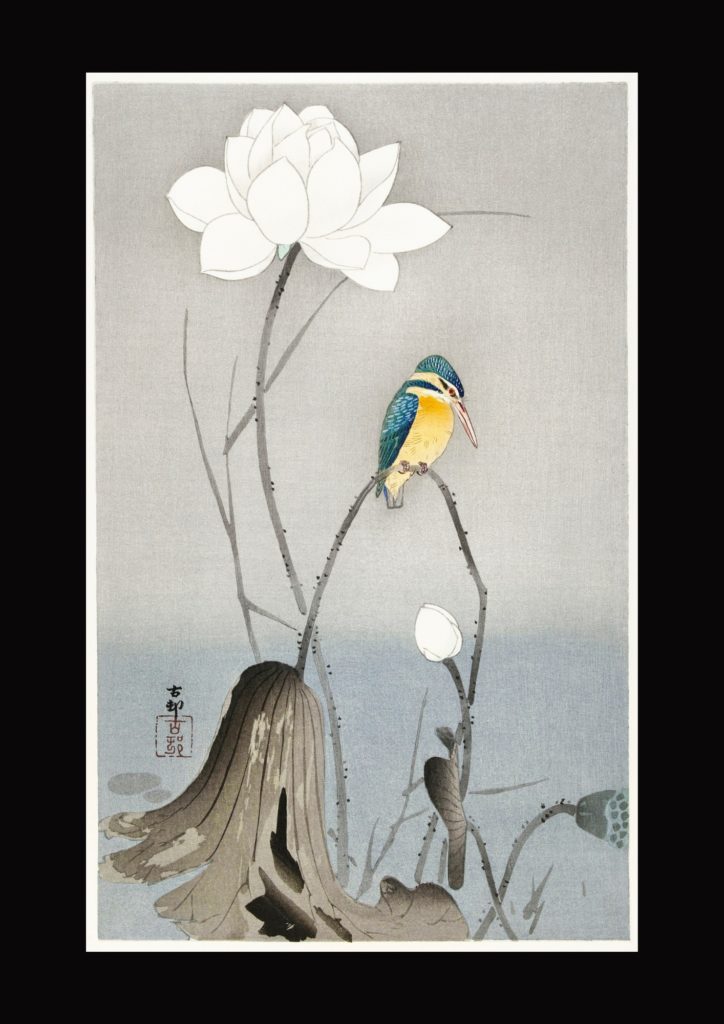
Kingfisher with Lotus Flower (1900 - 1945) by Ohara Koson from the Rijksmuseum.
